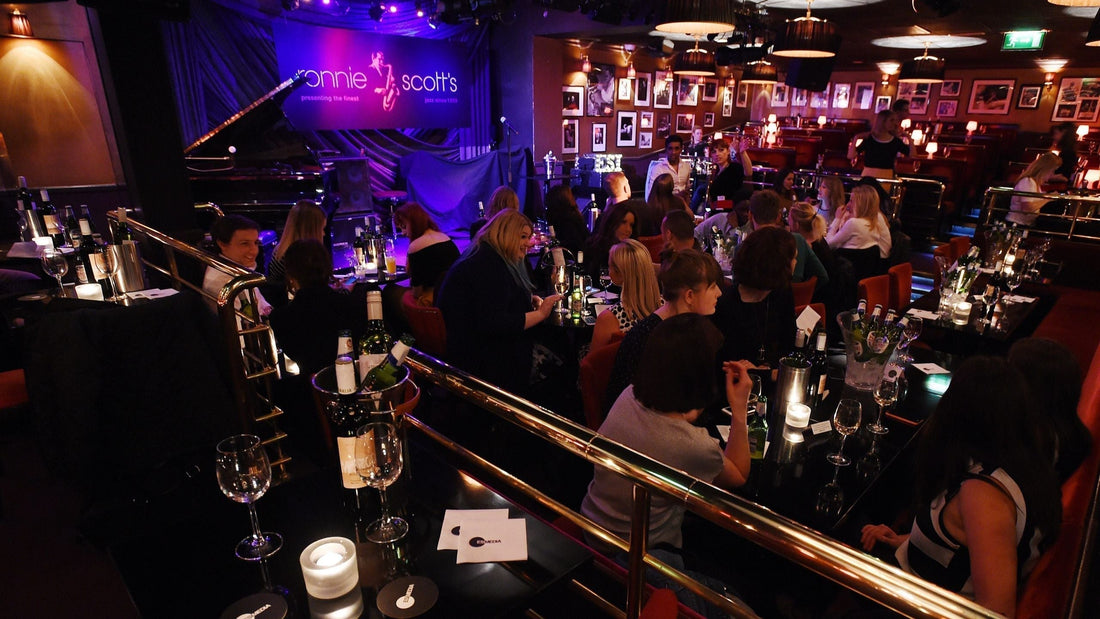
Where Jazz Meets Perfection – Inside Ronnie Scott’s Sound in Soho
By Rafi Mercer
New Listing
47 Frith Street, Soho, London W1D 4HT, United Kingdom
It’s a Friday night in Soho, and the streets feel alive in that peculiar way only London manages – rain-slick cobbles reflecting neon, the air thick with a mix of perfume, cigarette smoke, and the low hum of anticipation. I’m making my way down Frith Street, past the restaurants and bars, until I see it: the red neon sign that has been a beacon to music lovers for over six decades. Ronnie Scott’s. You don’t so much enter as you cross a threshold into another world.
Inside, the space is intimate – a room where every seat feels close to the stage. The moment you walk in, you’re struck by the warmth of the acoustics. This isn’t a cavernous venue where sound is swallowed by empty space. This is a room that hugs the music. Over the years, the club has invested heavily in its sound system, ensuring that whether it’s a blistering trumpet solo or the gentle brush of a snare, it arrives at your ears with clarity and soul. The system is tuned not for volume but for depth, so you feel the music wrap around you rather than push you back in your seat.

Fine Sounds: Inside (Credit Ronnie Scotts)
Ronnie Scott opened the club in 1959, inspired by the jazz haunts of New York’s 52nd Street. It quickly became a cornerstone of London’s music scene, hosting legends from Miles Davis to Nina Simone, and today it remains a place where history and the present collide nightly. There’s a sense of continuity here; you’re hearing music in the same room that’s absorbed decades of performances, and somehow, it’s all in the walls.
The sound is the star. You notice how the balance between instruments is so carefully managed that you can close your eyes and place each musician in the space. The bass isn’t a thump in your chest; it’s a tone that breathes. The cymbals shimmer without tearing your eardrums. The vocals, whether smoky or soaring, are anchored right in front of you. It’s the kind of mix that makes you realise how many other venues get it wrong.
The seating layout plays its part in the listening experience. There’s no bad vantage point. Even from the back, the sound reaches you with presence, and because the capacity is modest, you’re never more than a few seconds from making eye contact with the performer. This intimacy is part of why Ronnie’s has endured; you don’t just watch the show – you’re in it.
The night I’m here, the set list moves effortlessly from swing to contemporary jazz, with moments of improvised brilliance that bring the room to life. It’s not just a gig; it’s a conversation between the musicians and the audience, a shared moment that won’t happen in quite the same way again. And because the club has an unrelenting commitment to quality sound, every note lands exactly as intended.
Ronnie Scott’s isn’t trying to be all things to all people. It’s not a place where you pop in for a casual pint and background music. It’s a destination for people who want to listen. And in a city where noise often trumps nuance, that’s something worth celebrating.
When you leave, stepping back into the chaos of Soho, there’s a clarity in your ears and a kind of calm in your mind. That’s what happens when you spend an evening in a room designed for music, with people who care enough to make it sound just right. Ronnie Scott’s is more than a club – it’s proof that great sound still matters. And in the Tracks & Tales world, that’s the kind of place that might just earn itself a star.
Rafi Mercer writes about the spaces where music matters. For more stories from the Tracks & Tales, subscribe, or click here to read more.


